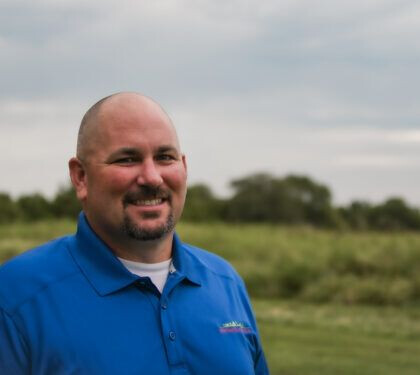Rising Above Unexpected Hurdles
Sunset at Kris Reynold’s farm in IllinoisIn addition to being AFT’s Midwest regional director, I am a crop farmer in Illinois. Each year brings its own unique set of challenges. Looking back on 2019, when Illinois had record amounts of rainfall, there were a lot of obstacles to overcome to plant the crop in the spring and harvest it in the fall. The year 2020 had its own challenges due to the pandemic, weather and volatile crop prices. For the first time in my farming career, I planted soybeans before corn into a green cereal rye cover crop. Because I made this decision, I was able to plant soybeans in April and take advantage of the optimal no-till soil conditions. The soybeans got off to a good start and I was able to plant corn soon after. These practices helped us to produce a great corn and soybean crop. I view cover crops as an input to my commodity crops and believe that they should be treated in the same way. At the end of the day, I want my management decisions to make my farming operation more profitable, if not—I won’t be in business very long. As I plan for the challenges that lie ahead, I also reflect on what I have accomplished this year and what I am most proud of.
Zoom Snapshot of an AFT WFL Learning Circle Online Training EventThis year in the AFT Midwest region, there were many unexpected hurdles we
had to overcome. Our region’s ability to quickly transition from in-person meetings and programs to an online interface and platform was one of the highlights of this past year. Fortunately, since our team members have all worked remotely in the past, we were favorably positioned to make that transition. We had the technology already established and the foundation to quickly adapt. This is a big part of what drove the rest of our success. Even though we had to make some minor changes, we were able to keep on track with our programs and were even able to bring two additional employees on by the end the year.
For years we have been working in the Midwest to promote the adoption of soil health practices as a way to improve water quality, boost soil health and help keep farmers on the land.
This past year we began taking a closer look at the climate co-benefits that the practices also provide. There are a lot of shared advantages between sustainable agriculture practices and the fight against climate change. I believe we will be a leader in outcomes quantification and in implementing climate smart practices. We recently released a fact sheet, “Carbon Farming in Illinois”, that has created numerous opportunities for us to scale and expand our work.
Kris Reynolds Planted Soybeans into Green Cereal RyeWe recognize the opportunities that agriculture has in combatting climate change are quickly rising on the horizon, and we want to be able to help farmers, create transparency, and get involved in ways which benefit them the most. We recently released a fact sheet summarizing AFT’s Combating Climate Change on US cropland report. The bottom line is that the same practices that are good for water quality and soil health are also good for climate.
What top successes have we had for farming communities?
Securing funding for the “Fall Covers for Spring Savings” Cover Crop Premium Discount Program, or FCSS. This program could have easily been eliminated with the state budget assessment and the pandemic happening at the same time. Originally, we were hoping for double the funding—but what matters most is that it was still there! We are looking forward to promoting this and following the demand.
The amount of financial assistance that was delivered for farmers within Upper Macoupin Creek Watershed and Vermilion Headwaters Watershed. We continue to work with NRCS at the local level to prioritize financial and technical assistance to the practices and places where it was have the biggest environmental impact on reducing nutrient losses.
Pivoting our on-the-ground programs to an online setting. We found unique ways to deliver technical resources to farmers in these communities through targeted outreach. We are continuing to identify areas of interest for farmers and building programming in these areas.
How do farmers survive with the future of our changing climate? It is vital for farmers to better understand all the many benefits of conservation practices. Many conservation practices that are already being implemented are successful and are helping to mitigate climate change. The economic, environmental, and social benefits of these practices are huge! We need to think long-term and determine how farmers can benefit from these practices for multiple years. Financial and technical assistance programs are so important because farmers need access to resources to do these practices the right way and the most economical way.
As I look ahead, we will continue to look at ways to make the farmers and the land they farm more sustainable and resilient. We will look for opportunities to influence state and federal policy decisions and advocate for funding to be used in a way that will provide the best environmental, economic and social outcomes.




